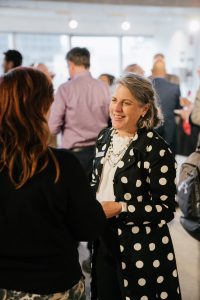For International Women’s Day, Engineers Australia CEO Romilly Madew AO FTSE HonFIEAust EngExec explores how diversity and inclusion efforts are forging a more positive future.
This year’s International Women’s Day theme, “Count Her In: Invest in Women. Accelerate Progress”, calls on us to consider how we can foster greater economic inclusion for women and girls everywhere.

It means creating an economy that works for everyone, regardless of their gender, sexuality, place of birth, family background, age, ability or any other circumstances over which they have no control.
It means that we all have full and equitable access to market opportunities as employees, leaders, consumers and community members.
For the majority of Australian women, this is not reality:
- Women still carry the greatest share of unpaid work in homes and families, while paid care work is undervalued. On average, an Australian woman earns one million dollars less than an Australian man across her career.
- Motherhood attracts a significant earnings penalty, with a woman’s earnings reduced by 55 per cent on average in the first five years of her child’s life, while during the same time, men’s earnings remain unaffected.
- Men disproportionately hold managerial and leadership positions, even in female-dominated industries.
These statistics highlight the scale of the challenge. As we mark International Women’s Day this year, we must ask: How do we chart a path forward?
Increasing women’s economic participation offers enormous benefits at an individual level, at an industry level and at a macroeconomic level.
The Workplace Gender Equality Agency (WEGA) recently published for the first time information on employer gender pay gaps to help push organisational accountability and drive gender pay equality.
Engineers Australia welcomes this move. It is an important action in the ever-growing movement to advance women’s economic opportunities and outcomes.
The gap between women’s and men’s average earnings stems from social, economic, industry and workplace factors that combine to reduce women’s earning capacity over time.
The engineering profession is a glaring example of this. Just 16 per cent of qualified engineers in the Australian labour force are women.
Many women with an engineering qualification have told us that the system is not set up to support them.
Our Women In Engineering research found that:
- Only 55 per cent of female engineers say they have equal opportunities to men.
- Nearly one in five female engineers report that there is bullying or exclusion of women in their workplace.
- About two in three surveyed women who left the engineering profession did so because they felt that their opportunities for career progression were limited, or they experienced gender discrimination, bullying or sexual harassment.
Research commissioned by the Champions of Change STEM Group, of which Engineers Australia is a partner, found:
- More than one in two female engineers with children believe their progress has been inhibited due to feeling that a “boys’ club” mentality exists in the profession.
- More than two in five of those without children also believe the “boys’ club” mentality has reduced their progress in engineering.
As a profession, we must continue to work collaboratively to address some of the systemic barriers to workforce participation.
Part of this must include providing more support for parents and carers, so that skilled engineers are not forced to choose between parenthood and their career. Quality part-time work opportunities must also be a priority.
A way forward
Our research has shown that seven in 10 engineers with children believe that flexible working arrangements would have the most positive impact on their career progression.
And we have a gender problem in our all-important engineering pipeline. The government’s STEM Equity Monitor shows that, in years nine and 10 of school, the choice of STEM electives has already become skewed by gender.
Many girls have never thought about engineering as a career, because they are not clear what it involves. Engineers Australia is working with government, industry, universities and schools on initiatives to provide hands-on experience and inspiration to students.
This includes engineering summer schools and other activity-based programs supported by volunteer engineers. Next is choosing what works best to inform and inspire to scale for the greatest impact to fill the future pipeline. It will be collaboration that moves us forward.
Finally, industry must adopt bold targets that significantly increase the number of women in its workforces, and set expectations of leaders to build diverse and inclusive teams as drivers of innovation.
Count Her In: Invest in Women. Accelerate Progress. Pretty simple really, but sadly we’ve a long way to go.